Takuya Fujioka
Emotional Speech Synthesis for Companion Robot to Imitate Professional Caregiver Speech
Sep 27, 2021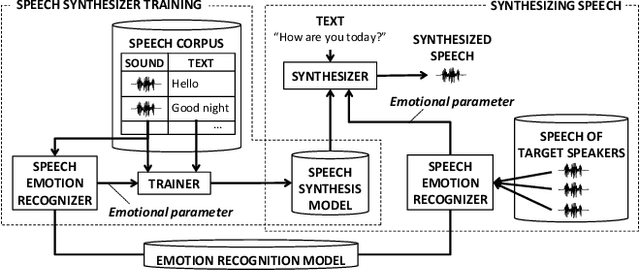
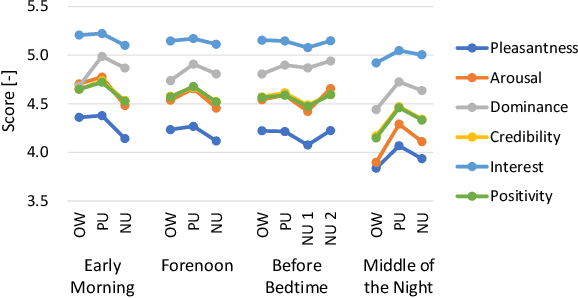
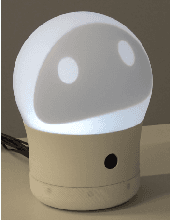
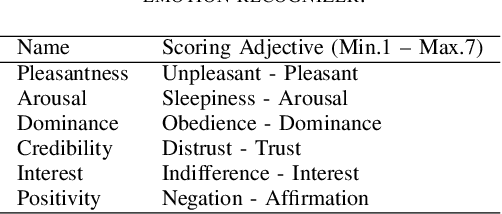
Abstract:When people try to influence others to do something, they subconsciously adjust their speech to include appropriate emotional information. In order for a robot to influence people in the same way, the robot should be able to imitate the range of human emotions when speaking. To achieve this, we propose a speech synthesis method for imitating the emotional states in human speech. In contrast to previous methods, the advantage of our method is that it requires less manual effort to adjust the emotion of the synthesized speech. Our synthesizer receives an emotion vector to characterize the emotion of synthesized speech. The vector is automatically obtained from human utterances by using a speech emotion recognizer. We evaluated our method in a scenario when a robot tries to regulate an elderly person's circadian rhythm by speaking to the person using appropriate emotional states. For the target speech to imitate, we collected utterances from professional caregivers when they speak to elderly people at different times of the day. Then we conducted a subjective evaluation where the elderly participants listened to the speech samples generated by our method. The results showed that listening to the samples made the participants feel more active in the early morning and calmer in the middle of the night. This suggests that the robot may be able to adjust the participants' circadian rhythm and that the robot can potentially exert influence similarly to a person.
Addressing Ambiguity of Emotion Labels Through Meta-Learning
Nov 07, 2019

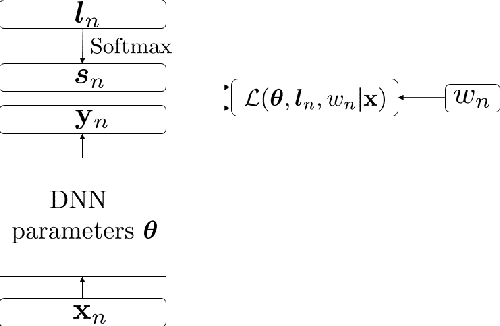

Abstract:Emotion labels in emotion recognition corpora are highly noisy and ambiguous, due to the annotators' subjective perception of emotions. Such ambiguity may introduce errors in automatic classification and affect the overall performance. We therefore propose a dynamic label correction and sample contribution weight estimation model. Our model is based on a standard BLSTM model with attention with two extra parameters. The first learns a new corrected label distribution, and is aimed to fix the inaccurate labels from the dataset. The other instead estimates the contribution of each sample to the training process, and is aimed to ignore the ambiguous and noisy samples while giving higher weight to the clear ones. We train our model through an alternating optimization method, where in the first epoch we update the neural network parameters, and in the second we keep them fixed to update the label correction and sample importance parameters. When training and evaluating our model on the IEMOCAP dataset, we obtained a weighted accuracy (WA) and unweighted accuracy (UA) of respectively 65.9% and 61.4%. This yielded an absolute improvement of 2.5%, 2.7% respectively compared to a BLSTM with attention baseline, trained on the corpus gold labels.
 Add to Chrome
Add to Chrome Add to Firefox
Add to Firefox Add to Edge
Add to Edge